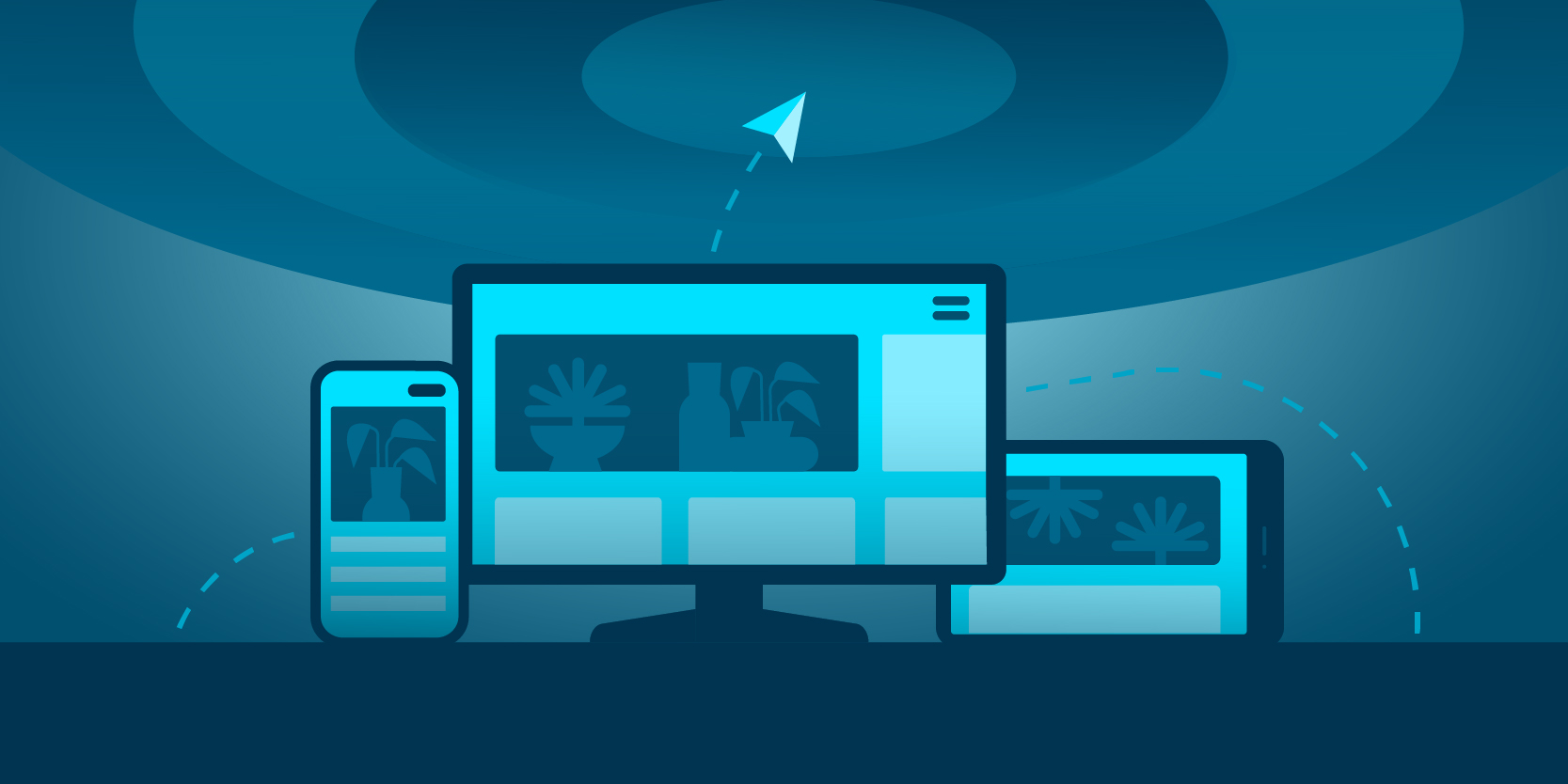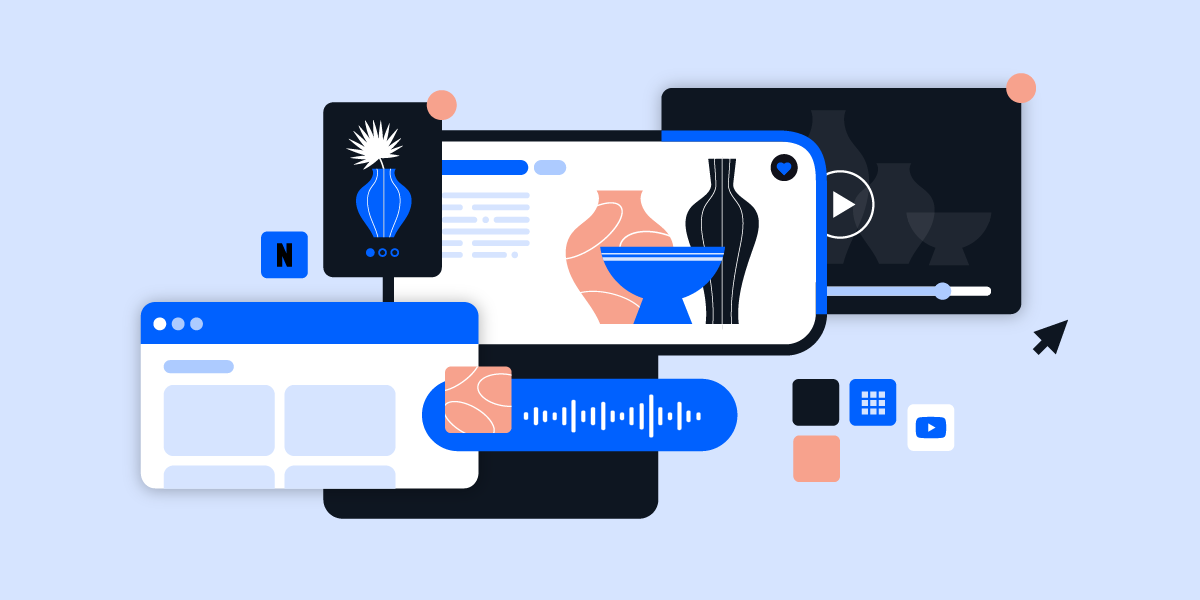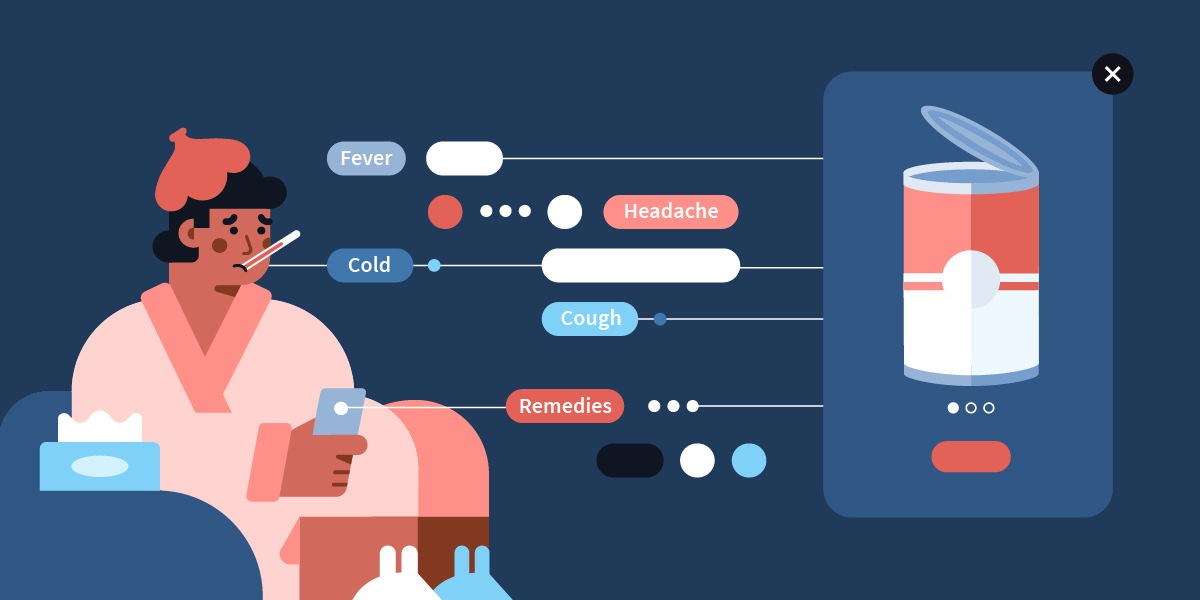With a multi-channel strategy, you can reach consumers throughout the entire funnel, creating a cohesive story across channels like native, display, video, connected TV (CTV), and audio. Using a mix of complementary channels increases the percentage of the total target audience that you can reach, and it helps you to craft a brand story throughout the entire customer journey.
Read on to learn all the basics of multi-channel targeting, the benefits of a multi-channel strategy, and about multi-channel retargeting.
What is Multi-Channel Targeting
Multi-channel targeting enables you to reach users across different platforms and channels. This strategy helps you to gain greater reach by capturing users who are only using some channels. The focus of a multi-channel campaign is on creating a cohesive message across the included channels. You may run a campaign across two, like display and audio, or across more including video and CTV.
3 Benefits of a Multi-Channel Strategy
A multi-channel strategy is key in today’s digital landscape because consumers are active across various channels and devices. Understanding how users are interacting across platforms is central to learning how you can effectively reach them, and reach your ROI goals!
Here are the three of the main advantages of a multi-channel strategy.
1. Helps you reach customers where they are.
Customers use a variety of devices and channels these days, so it’s important to approach your targeting strategy holistically. This way, you’re able to reach your target audience where they are: which is everywhere. A multi-channel strategy enables you to optimize your targeting so that it mimics the customer journey, which typically doesn’t stay confined to one channel.
2. Creates more visibility for your brand.
The more presence you have on various channels, the more visible your brand, products, and services are. By creating seamless coherence across the channels that you’re appearing on, you can consistently remind users about your offerings, which will inch them closer to conversion as well as build brand awareness and personality.
3. Increases engagement from your customers.
A multi-channel strategy helps you reach your customers where they are, which also increases the likelihood for engagement. And if you’re present on various channels, your customers won’t be scrambling to find you, which helps build customer loyalty.
A Multi-Channel Strategy Boosts Campaign Performance
A cross-channel tactic will help capture users who are on only some of the channels you’re using in your campaigns. Targeting multiple channels is proven to lift the performance of campaigns that are otherwise run on just one.
StackAdapt research has shown that both native and display click-through rates (CTR) get a boost when the user has previously been exposed to the other channel. And, video CTRs increase when a user has already been exposed to a display ad.
For example, we’ve found on the StackAdapt platform that a multi-channel strategy consistently helps to extend the reach of native campaigns. If a campaign is running native only, it may reach 53% of a target audience.
However, if native is run along with display, the total campaign reach would be 87%. Or, if native is run with video added, the total campaign reach would be 83%.
Use Multi-Channel Retargeting to Re-Engage Your Audience
With a retargeting strategy, you’re able to deliver online ads to a user based on their previous intent-based actions on the web. It’s an important tactic for re-engaging a user who has shown interest in your brand or product, and moving them down the funnel toward a conversion.
Through cross-channel retargeting, you can increase the likelihood that your messaging reaches your audience repeatedly. Seeing your ads across devices and in various formats helps to build campaign awareness.
With high reach and frequency across your target universe, your messaging will reach the users who matter most to your campaign.

The Power of a Multi-Channel Strategy
Let’s say an e-commerce brand is looking to drive brand awareness and product purchases through a multi-channel campaign.
That brand could start with prospecting, capturing new users through ads across CTV and video. By running the campaign across two channels, the brand will extend the reach of the campaign, increasing campaign scale.
A prospecting campaign would be used to attract new customers, while also building the audience pool for a simultaneous retargeting tactic. In this scenario, the brand could leverage display as their main retargeting channel, using a video completion strategy to target users who’d watched their video and CTV ads in full.
With this multi-channel approach, an e-commerce brand will drive brand awareness, engagement and qualified leads to their website.
On the StackAdapt platform, we’ve found that if a campaign is running CTV only, it will reach 9% of a target audience. However, if video was added, the total campaign reach is 77%. Clearly, the multi-channel approach drives greater reach, resulting in a larger retargeting pool.
Introduce a Multi-Channel Strategy
The reality of today is that customers are using a mixture of channels, and so a strategic approach to capturing attention is to be present on the channels and devices they are on.
The rise of mobile commerce doesn’t mean other channels no longer deserve your ad spend. A multi-channel marketing approach takes this into account.
With a multi-channel approach you can deliver ads across a variety of channels. By creating multiple points of contact for your target audience, you can create more opportunities for acquisition.
With programmatic, multi-channel distribution is easier than ever. Plus, most demand-side platforms (DSPs) allow you to target cross-device as well.
This is a powerful aspect of multi-channel marketing because cross-device targeting enables you to reach your audience on their desktop, mobile, tablet devices, and on connected TVs.





